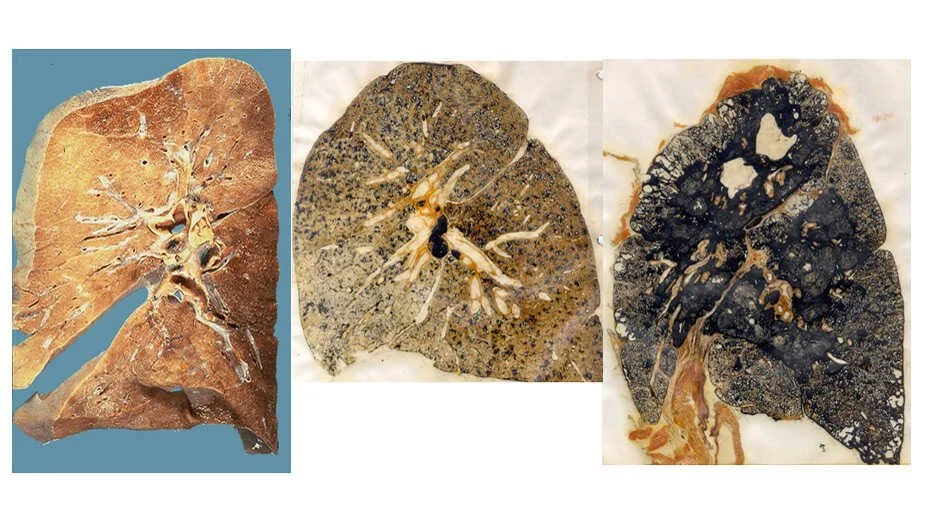In Literature Appetizer, Ben gives you just a taste of a book. Not meant to replace the full meal, this is meant to whet your appetite. Bon appetit!
Back in 2019, I showcased a book called Ramp Hollow: the Ordeal of Appalachia. One of the key messages of that book is the people living here have had their land, their homes, their lives taken from them countless times. It is truly the spirit of Appalachia to recover from unthinkable tragedies over and over again.
In Soul Full of Coal Dust, Chris Hamby illustrates that even the lungs of miners are up for grabs. After years of working in the mines, coal miners couldn’t get the legal help they needed to survive. This story is one of a community of people, from out of state lawyers to long time coal miners, to give the miners the support they desperately need.
Progression of Black Lung. Photo courtesy of NIOSH found at NPR.org.
Pittsburgh used to be one of the dirtiest cities, some even calling it hell with the lid off. Because of all the steel production, the city would be covered daily in ash. It wasn’t uncommon for folks to wash the walls, both outside and in, on a weekly basis. The city put tough regulations on those mills and now we don’t have ash falling in the city. That fight isn’t over everywhere though…
Mining coal has a similar process of making particulate material that just goes everywhere. For those who are around it for long periods of time, it is toxic. But when one community near a mountain top removal site, that had dust covering everything on a daily basis, fought the local coal company one of the lawyers argued
“One person’s intolerable nuisance can be another person’s welcome, or even embraced, inconvenience.”
Large coal companies will argue anything just so they can pay 1 cent less…even at the cost of human lives.
While breathing in fallen ash and dust over years can damage the body, working in the mines is an entirely different story. The levels of coal dust concentration is magnified by small working areas and long hours. It is like standing above a steel mill, breathing in the ash on a daily basis.
Miners worked hard to get some compensation for the coal companies destroying their bodies but they had two main hurdles to overcome; cheating the system and long legal battles.
The government tried to prevent black lung from happening by having mandatory sensors that miners had to wear. These sensors collected samples while the miners were working. If the sample showed dust levels above a certain threshold, the company would be fined. But President Regan’s administration greatly rolled back both the maximum levels allowed and how easy these sensors were to trick. One of the most common tactic was to wear it going into the mine, take it off at the entrance, and put it back on after a shift. Inspectors would then think they were being worn the entire time, rather than only at the least dusty location.
After working in the mines for years, miners who contracted black lung also had an uphill legal battle. The benefits claim process was supposed to be a fair fight. But again, thanks to conservative judges, miners had to prove beyond a shadow of a doubt that it was black lung…and not something else. Coal companies would hire doctors to fight every claim who would often blame poor health on smoking, alcohol, or not enough exercise. It was only during an autopsy, they would claim, that you could absolutely prove it was black lung. But by that point most families didn’t have the financial resources to keep fighting.
This is a great book just to see how to overcome great challenges. In the end, the families swayed the system a bit, but it is still not enough. The best thing we can do for not only coal miners but for all workers around the world is
“Pray for the dead and fight like hell for the living.”


